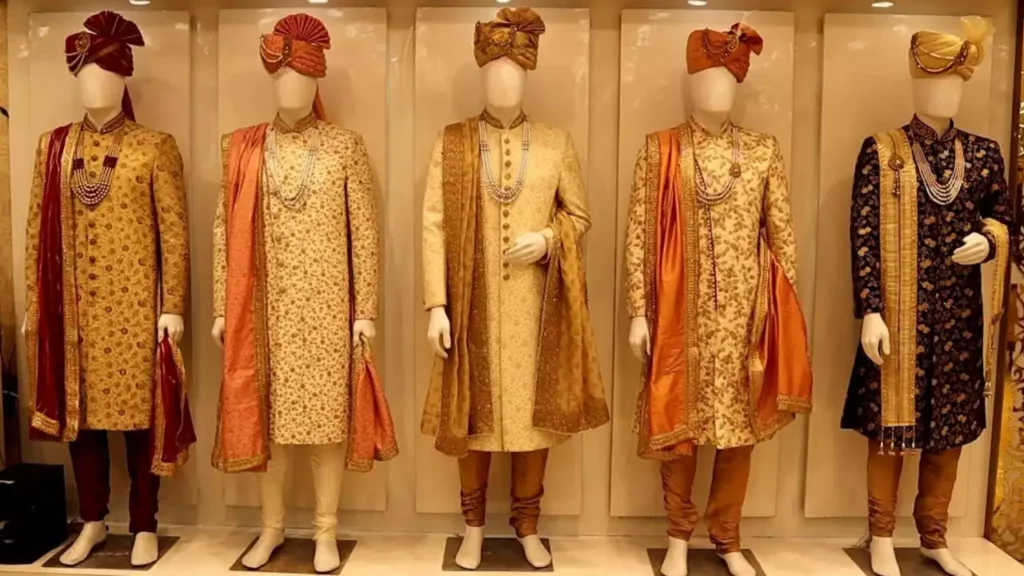From traditional safa and mala to modern jooti and brooch, an Indian wedding is no longer complete without a touch of royalty for the groom, as well as his immediate family and friends. These accessories have become indispensable additions for wedding collection brands, often defining the overall look and feel of the celebration.
“While it (accessories) accounts for just 7-8% of the wedding collection sales, customers will just walk off the store if these products don’t match their outfits worth a few lakhs. These accessories are a make or break for brands,” said Mayank Mohan, owner of ethnic menswear brand Mohanlal Sons. “While we sell mala, we had discontinued imitation jewellery earlier, but are now planning to reintroduce them.”
In the past, occasion wear was predominantly catered to by local shops or made-to-order services. However, in the last decade, brands like Manyavar, Mohanlal, Tasva, and Ethnix by Raymond have introduced a level of consistency in the celebration wear segment, particularly in terms of delivery and execution. What initially began with apparel has now extended to include accessories that customers choose to complement their attire.
Continue Exploring: Hotel chains ride the wave of India’s wedding tourism surge with innovative offerings
Pearl necklaces (moti malas) and turbans (safas) have emerged as essential elements in enhancing the groom’s appearance on his special day. Consequently, these styling items offer a compelling rationale for wedding attire brands to broaden their product portfolios. Additionally, even friends and guests are adorning themselves with these accessories at Indian weddings, further emphasizing their significance in the celebration.
“We are not in the business of just selling sherwanis, kurtas, jootis and stoles, and instead focus on the entire look,” said Sunil Kataria, chief executive of Raymond Lifestyle that owns Ethnix. “As part of the selling process, this is an important part of training. It is a must for the groom because his entire ensemble hinges on the accessories. So, when you are selling a sherwani or occasion wear, the whole outfit as a style goes together. If these don’t match, then the sale gets rejected,” he said.
As per the analysis by management consulting firm Wazir Advisors, the apparel and accessories market in India reached an estimated value of $75 billion in FY23, with the ethnic wear sector accounting for approximately 30% of this total, equating to $22 billion.
“This branded play within men’s ethnic is marked by both strong regional players as well as select national players,” said Pakhi Saxena, retail and CPG (consumer packaged goods) practice head at management consulting firm Wazir Advisors. “These players shall continue to garner share of the wedding and celebration accessories category as it lends to increase in basket size, average ticket value and most importantly enhances the customer engagement through offering of ensemble and curation. Accessories enable them to upsell by curating and customising the look,” she said.
Continue Exploring: Wedding-related expenditure remains subdued in FY24, luxury products buck trend, says industry executives
